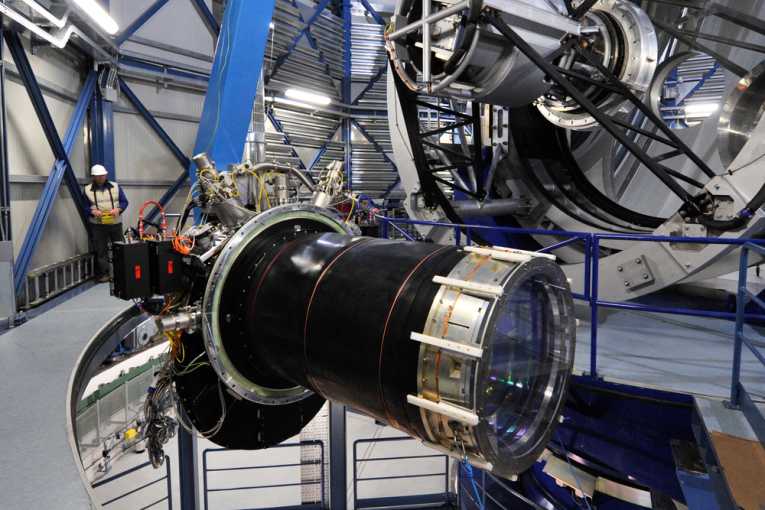New infrared images from the center of the Milky Way reveal faint, previously undiscovered globular clusters - a rare and unexpected finding given that fewer than 200 of the formations exist in our galaxy. Astronomers from the European Southern Observatory (ESO) used the VISTA survey telescope at Paranal Observatory in Chile to discern the small groupings of stars deep within the centre of our galaxy.
Previously screened from view by obscuring dust, the newly detected globular clusters are extraordinarily dim and distant objects. Globular clusters are spheres composed of stars that orbit a central core. Bound by gravity, they are denser and older formations containing hundreds of thousands of stars. The discovery of two new globular clusters in the Milky Way brings the total of these formations to 160. Scientists believe a few dozen more may yet await discovery.
The images from VISTA are some of the first fruits of an ambitious project, called VVV, to systematically survey the center of our home galaxy in infrared light. VISTA is also detecting new open (or galactic) clusters, which are another, more common type of formation, consisting of younger stars in lower numbers than are found in globular clusters.

Caption: This image from VISTA is a tiny part of the VISTA Variables in the Via Lactea (VVV) survey that is systematically studying the central parts of the Milky Way in infrared light. On the right lies the globular star cluster UKS 1 and on the left lies a much less conspicuous new discovery, VVV CL001 - a previously unknown globular, one of just 160 known globular clusters in the Milky Way at the time of writing. The new globular appears as a faint grouping of stars about 25 percent of the width of the image from the left edge, and about 60 percent of the way from bottom to top. Credit: ESO/D. Minniti/VVV Team
The results of the survey, which began just a year ago, will be published in the scientific journal Astronomy & Astrophysics. "This discovery highlights the potential of VISTA and the VVV survey for finding star clusters, especially those hiding in dusty star-forming regions in the Milky Way's disc. VVV goes much deeper than other surveys," says Jura Borissova, lead author of the study. The VVV team believes it is likely to discover many more clusters, especially the more common open clusters, as the survey continues. Already, the VVV survey has added nearly 100 new clusters to the known total in the Milky Way.










